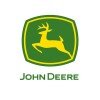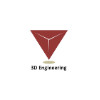FEA Engineer
20+ FEA Engineer Interview Questions and Answers

Asked in Quest Global

Q. How many natural frequencies are zero for a free-free modal analysis of hex elements?
The number of zero natural frequencies in free-free modal analysis of hex elements.
Free-free modal analysis
Hex elements
Zero natural frequencies

Asked in Quest Global

Q. What material properties are required for thermal analysis?
Materials properties required for thermal analysis
Thermal conductivity
Specific heat capacity
Thermal expansion coefficient
Melting point
Boiling point
Heat transfer coefficient
Thermal diffusivity

Asked in Quest Global

Q. How do you resolve non-linearity convergence issues?
Non-linearity convergence issue can be resolved by adjusting the solver settings and/or modifying the model.
Check the initial conditions and boundary conditions
Try using a different solver or adjusting the solver settings
Modify the model to reduce non-linearity
Check for any errors in the input data or model setup
Increase the number of iterations or decrease the convergence tolerance
Consider using sub-stepping or adaptive time-stepping
Perform a sensitivity analysis to identify...read more

Asked in Quest Global

Q. What are the different quality checks for a mesh?
Quality checks for mesh include element size, aspect ratio, skewness, orthogonality, and boundary conformity.
Element size should be appropriate for the geometry and physics of the problem.
Aspect ratio should be within acceptable limits to avoid distorted elements.
Skewness should be minimized to avoid numerical errors.
Orthogonality should be maintained to ensure accurate results.
Boundary conformity should be checked to ensure proper connection with adjacent meshes.
Examples: Ja...read more

Asked in Quest Global

Q. What are the different types of elements in Ansys APDL?
Ansys APDL has various types of elements including structural, thermal, fluid, electromagnetic, and acoustic elements.
Structural elements include beam, shell, and solid elements
Thermal elements include conduction, convection, and radiation elements
Fluid elements include 1D, 2D, and 3D elements for incompressible and compressible flows
Electromagnetic elements include magnetic, electric, and coupled field elements
Acoustic elements include 2D and 3D elements for sound pressure a...read more
Asked in Idac Solutions

Q. Stress strain Curve for Mild Steel and aluminum and difference?
Mild steel has a gradual yield point and high ductility, while aluminum has a sharp yield point and low ductility.
Mild steel has a gradual yield point, while aluminum has a sharp yield point.
Mild steel has high ductility, while aluminum has low ductility.
Mild steel can withstand more stress before breaking than aluminum.
Aluminum is lighter than mild steel and has better corrosion resistance.
FEA Engineer Jobs




Asked in Quest Global

Q. What is the difference between Low Cycle Fatigue and High Cycle Fatigue?
Low cycle fatigue occurs at high stress levels and a small number of cycles, while high cycle fatigue occurs at low stress levels and a large number of cycles.
Low cycle fatigue is caused by plastic deformation and occurs at stress levels above the yield strength of the material.
High cycle fatigue is caused by cyclic loading and occurs at stress levels below the yield strength of the material.
Low cycle fatigue is typically seen in aerospace and automotive applications, while h...read more

Asked in John Deere

Q. What is the difference between linear and non-linear analysis?
Linear analysis assumes linear relationship between inputs and outputs, while non-linear analysis considers non-linear relationships.
Linear analysis assumes small changes in inputs result in proportional changes in outputs
Non-linear analysis considers complex relationships between inputs and outputs
Linear analysis is simpler and faster, while non-linear analysis is more accurate
Examples of non-linear analysis include material yielding, large deformations, and contact problems
Share interview questions and help millions of jobseekers 🌟


Asked in Quest Global

Q. Why do solid elements have 3 degrees of freedom?
Solid elements have 3 degrees of freedom (DOF) because they can only deform in 3 directions.
Solid elements are used to model objects that are not easily deformed in all directions
The 3 DOF are translations in x, y, and z directions
Examples include beams, columns, and plates
Asked in MakerStrive

Q. what is Meshing ? What do you mean by mesh Convergence?
Meshing is the process of dividing a complex geometry into small, simple shapes for analysis. Mesh convergence refers to achieving a stable solution as the mesh is refined.
Meshing is the process of dividing a complex geometry into small elements called 'mesh' for FEA analysis
Mesh convergence is the process of refining the mesh until the results of the analysis no longer change significantly
Convergence criteria are typically based on changes in key output parameters such as st...read more
Asked in Idac Solutions

Q. What are the types of elements?
Types of elements in FEA include 1D, 2D, 3D, beam, shell, solid, and more.
1D elements are used for modeling rods and beams
2D elements are used for modeling plates and shells
3D elements are used for modeling solids
Beam elements are used for modeling slender structures
Shell elements are used for modeling thin structures
Solid elements are used for modeling volumetric structures
Other types of elements include axisymmetric, plane stress, plane strain, and more

Asked in John Deere

Q. How do you perform model analysis?
Model analysis is performed by applying loads and constraints to a virtual model and analyzing its behavior using simulation software.
Create a virtual model using CAD software
Apply loads and constraints to the model
Use simulation software to analyze the model's behavior
Interpret the results and make necessary modifications to the model
Repeat the process until desired results are achieved

Asked in Rheinmetall Automotive

Q. How do you choose the number of frequencies?
The number of frequencies should be chosen based on the complexity of the model and the desired level of accuracy.
Consider the size and complexity of the model - more frequencies may be needed for intricate geometries
Balance between computational time and accuracy - higher number of frequencies increases computation time
Perform convergence studies to determine the minimum number of frequencies required for accurate results

Asked in 3D Engineering Automation LLP

Q. Explain the projects and FEA tasks involved in them.
Projects involve structural analysis, thermal analysis, modal analysis, and optimization using FEA software.
Performing structural analysis to ensure components meet design requirements
Conducting thermal analysis to study heat transfer and thermal stresses
Modal analysis to determine natural frequencies and mode shapes
Optimization studies to improve design performance and reduce weight
Examples: analyzing a car chassis for strength, simulating heat dissipation in electronic comp...read more

Asked in Tata Motors

Q. What is stress and strain?
Stress is the force applied to an object, while strain is the resulting deformation or change in shape.
Stress is measured in units of force per unit area, such as pounds per square inch (psi) or newtons per square meter (N/m²).
Strain is measured as a ratio of the change in length or shape of an object to its original length or shape.
Stress and strain are related through a material's elasticity, which is the ability of a material to return to its original shape after being def...read more

Asked in John Deere

Q. Type of analysis carried out
Various types of analysis are carried out such as structural, thermal, fluid, and dynamic analysis.
Structural analysis is used to determine the strength and stability of a structure under different loads.
Thermal analysis is used to study the temperature distribution and heat transfer in a system.
Fluid analysis is used to study the behavior of fluids and their interaction with solid structures.
Dynamic analysis is used to study the response of a system to external forces and vi...read more

Asked in John Deere

Q. Type of non linear analysis
Nonlinear analysis is used to simulate the behavior of structures under extreme conditions.
Nonlinear static analysis
Nonlinear dynamic analysis
Material nonlinearity
Geometric nonlinearity
Contact nonlinearity
Examples: buckling, plastic deformation, impact analysis

Asked in Quest Global

Q. Explain Principal Stress.
Principal stress is the maximum or minimum normal stress acting on a plane at a point in a stressed body.
Principal stress is a type of normal stress.
It occurs on a plane where the shear stress is zero.
The maximum and minimum principal stresses are perpendicular to each other.
The principal stresses are important in determining the failure of a material.
Examples of applications include designing structures and analyzing mechanical components.

Asked in Altair Engineering

Q. What is modal analysis?
Modal analysis is a technique used to study the dynamic behavior of structures by identifying their natural frequencies and mode shapes.
Modal analysis helps in understanding how a structure will respond to dynamic loads.
It involves calculating the natural frequencies and mode shapes of a structure.
Modal analysis is commonly used in structural engineering, aerospace engineering, and mechanical engineering.
The results of modal analysis can be used to optimize the design of stru...read more

Asked in LTIMindtree

Q. What is a balanced composite?
A balanced composite is a material made up of two or more different materials with the purpose of combining their properties.
Balance composites are designed to have specific properties such as strength, stiffness, and durability.
Examples of balance composites include fiberglass, carbon fiber, and Kevlar.
These composites are commonly used in industries like aerospace, automotive, and sports equipment.

Asked in Vertiv

Q. What types of elements are used in FEA?
Types of elements used in FEA include beam, shell, solid, and contact elements.
Beam elements are used for 1D analysis of structures like beams and trusses.
Shell elements are used for 2D analysis of thin structures like plates and shells.
Solid elements are used for 3D analysis of solid structures like blocks and volumes.
Contact elements are used to model interaction between different parts in a simulation.

Asked in AVL Technical Centre

Q. What is fatigue?
Fatigue is the weakening of a material caused by repeated loading and unloading.
Fatigue occurs when a material is subjected to cyclic loading, leading to cracks and eventual failure.
It is a common issue in engineering, especially in structures subjected to dynamic loads like bridges and aircraft.
Fatigue can be analyzed using techniques like Finite Element Analysis (FEA) to predict the lifespan of a component.

Asked in Xylem Water Solutions

Q. Coefficient of convection
Coefficient of convection is a measure of the ability of a fluid to transfer heat to a solid surface.
Coefficient of convection depends on the fluid properties, flow conditions, and surface geometry.
It is typically denoted by 'h' and has units of W/(m^2*K).
Higher values of h indicate better heat transfer between the fluid and solid surface.
Examples of factors affecting h include fluid velocity, temperature difference, and surface roughness.

Asked in Vertiv

Q. What types of FEA solvers are you familiar with?
FEA solver type refers to the specific software or algorithm used to solve finite element analysis problems.
Common FEA solver types include Abaqus, ANSYS, Nastran, and LS-DYNA
Solver type selection depends on the specific analysis requirements and capabilities of the software
Different solvers may have strengths in certain types of simulations, such as structural, thermal, or fluid analysis

Asked in ALTEN

Q. Newtons three equations
Newton's three equations describe the relationship between forces and motion.
First law: An object at rest stays at rest, an object in motion stays in motion unless acted upon by an external force.
Second law: F = ma, where force is equal to mass times acceleration.
Third law: For every action, there is an equal and opposite reaction.

Asked in Xylem Water Solutions

Q. What are the steps in the FEA process?
FEA process involves pre-processing, solving, and post-processing steps to analyze the behavior of structures under different conditions.
Pre-processing: Define geometry, apply boundary conditions, mesh generation
Solving: Apply loads, solve equations, obtain results
Post-processing: Interpret results, validate against experimental data, make design decisions
Interview Questions of Similar Designations
Interview Experiences of Popular Companies






Calculate your in-hand salary
Confused about how your in-hand salary is calculated? Enter your annual salary (CTC) and get your in-hand salary


Reviews
Interviews
Salaries
Users










